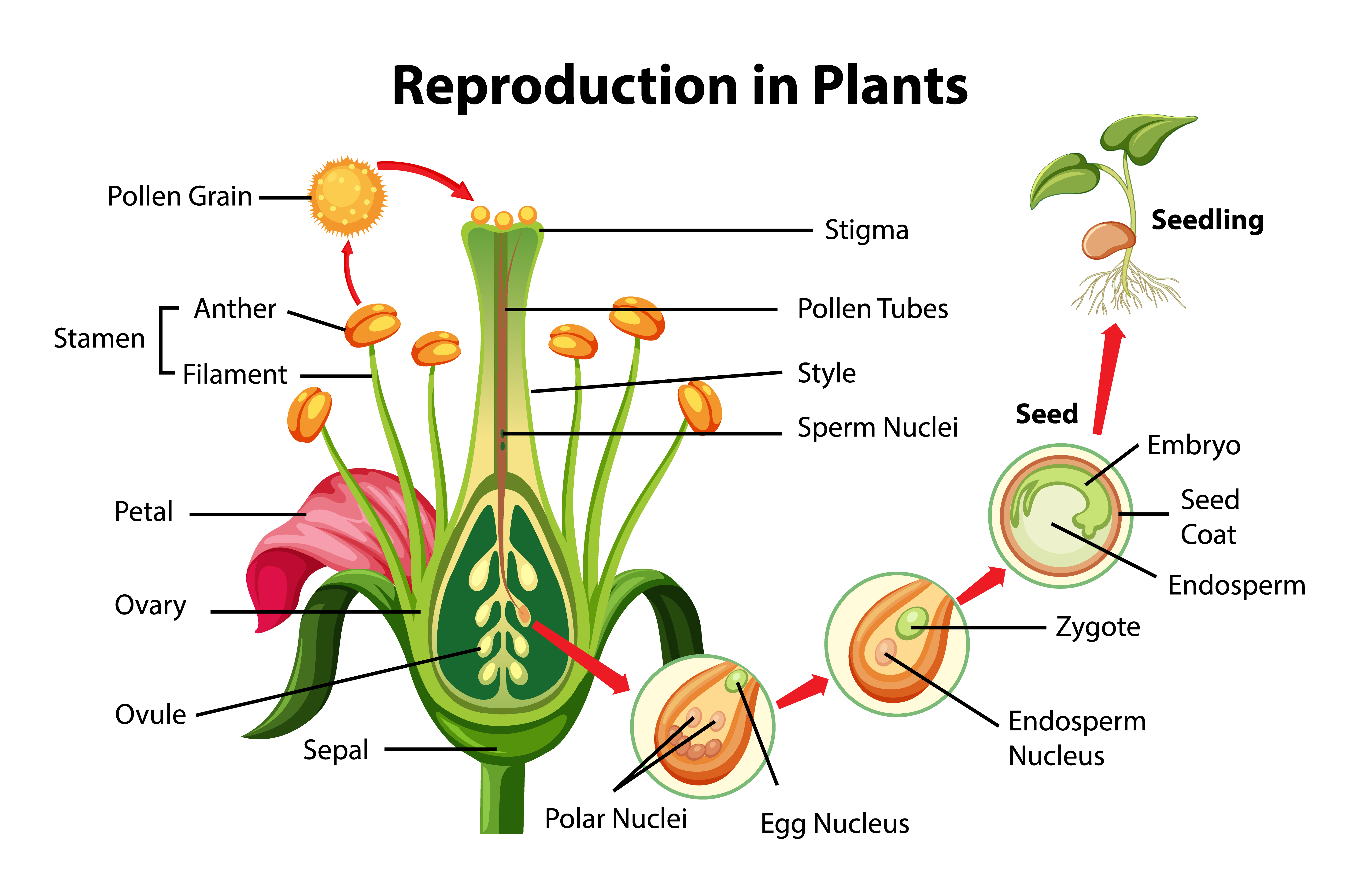Sexual reproduction in angiosperms involves the formation of male and female gametes through two processes: microsporogenesis and megasporogenesis. These processes occur within the reproductive structures of flowers, leading to the production of pollen grains (male gametes) and embryo sacs (female gametes), respectively.

Formation of Pollen Sac: Microsporogenesis occurs inside the anther, which is part of the stamen in a flower. Typically, each anther develops four pollen sacs, collectively known as a tetrad.
Diploid Mother Cells: Within each pollen sac, diploid cells called microsporocytes or pollen mother cells are present.
Meiosis: Each microsporocyte undergoes meiosis, a specialized cell division process, resulting in the formation of four haploid microspores. Meiosis reduces the chromosome number by half, ensuring each resulting microspore carries only half of the parent cell's genetic material.
Development of Pollen Grains: Microspores continue to mature and undergo notable structural transformations, eventually giving rise to pollen grains. The mature pollen grain consists of two cells: the generative cell and the tube cell.
Outer Layers: The pollen grain is enclosed by two protective layers called the exine and intine. The exine is made of a tough and resistant substance called sporopollenin, which helps protect the pollen grain during its dispersal.
Release of Pollen: Once mature, the pollen grains are released from the anther and can be transported to the stigma of a flower (pollination) to fertilize the ovule.
Exine: The exine is the outermost layer that surrounds the pollen grain. It is made of a tough and resistant substance known as sporopollenin. Sporopollenin protects the pollen grain from environmental stresses, such as desiccation and microbial attack, ensuring its viability during dispersal.
Intine: Located beneath the exine, the intine serves as the inner layer of the pollen grain. The intine is made up of a more delicate and flexible material.
Generative Cell: The generative cell is one of the two cells present in the pollen grain's cytoplasm. It plays an essential role in facilitating the process of double fertilization.
Tube Cell: The pollen grain also contains a second cell known as the tube cell. After pollination, this cell elongates to form the pollen tube, which grows through the style of the flower to reach the ovary and deliver the generative cell and sperm cells to the embryo sac for fertilization.
The term "pollen kit" is used to refer to the mature pollen grain along with its protective exine, the generative cell, and the tube cell. It represents the fully developed male gametophyte of the angiosperms.